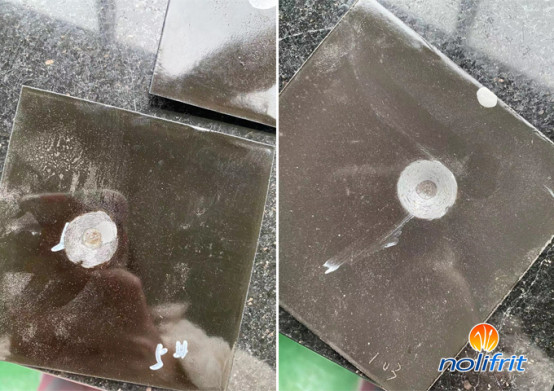Properties of Enamel Adhesive Materials
The porcelain layer of enamel products needs to obtain good adhesion. Generally speaking, the following conditions should be met: the composition of the enamel formula, in addition to introducing a certain amount of adhesive, the type of adhesive is also one of the decisive factors; the wettability of the enamel primer And viscosity, surface tension are also crucial to adhesion; there must be an appropriate melting process and degree of melting. Excessive melting and incomplete melting will bring certain difficulties to adhesion; enamelling and firing of enamel products must also be appropriate.

A brief introduction to several enamel adhesion materials:
1. Cobalt oxide
Cobalt oxide cobalt monoxide (CoO), dicobalt trioxide and tricobalt tetroxide (which can be regarded as a mixture of cobalt monoxide and dicobalt trioxide), most of which are cobalt monoxide in actual production.
CoO has a molecular weight of 74.9, a density of 5.7 g/cm3, and a melting point of 1930°C. It is non-toxic and tasteless, usually gray-black powder, insoluble in water, and soluble in acid and alkali metal hydroxide solutions.
Cobalt oxide is a strong adhesive. In addition to being used as an adhesive, it is also a strong colorant, which can make the enamel blue.
2. Nickel oxide
Nickel oxide nickel monoxide and nickel trioxide.
The molecular formula of nickel oxide is NiO, molecular weight 74.71, density 7.45 g/cms, green powder, insoluble in water, soluble in sulfuric acid, nitric acid, hydrochloric acid and ammonia water. It is yellow when hot, and oxidizes to NizOs when heated to 400°C in air,
Nickel trioxide, also known as high nickel oxide, has a molecular formula of NizOs, a molecular weight of 165.38, a density of 4.83 g/cms, a black and shiny powder, insoluble in water, soluble in sulfuric acid and nitric acid to release oxygen, soluble in hydrochloric acid to release hydrogen . At 600°C, it is reduced to NiO.
The adhesion of nickel oxide is slightly lower than that of cobalt oxide, but it is still a major adhesion agent. Typically used with cobalt oxide, nickel oxide-containing ground coat have a larger firing latitude to facilitate cohesive layer formation.
3. Molybdenum oxide
Also known as molybdenum trioxide, the molecular formula is MoOs, the molecular weight is 143.9, the density is 4.5 g/cm3, and the melting point is 795°C. It is a white powder that turns yellow when heated. Salt.
Since it is easy to sublimate, it is not suitable for melting, but for grinding, usually barium molybdate is directly introduced into the powder for melting.
4. Manganese dioxide
Manganese dioxide is natural pyrolusite, the molecular formula is MnOz, the molecular weight is 86.94, the density is 5.026 g/cm8, and it is heated to 535°C to form Mn;Os. The melting point of MngOs is 1705°C. Manganese dioxide is black or brown-black powder. It dissolves in concentrated sulfuric acid to release oxygen to form manganese sulfate, dissolves in hydrochloric acid to release hydrogen to form manganous chloride, and co-melts with caustic alkali and oxidant to release CO to form permanganate.
The adhesion ability of MnO2 is not obvious when used alone, mainly because it can promote the adhesion agents such as CoO and NiO. In addition to some of the above adhesives, others such as SbzOs, FezO; etc., are also commonly used adhesives.